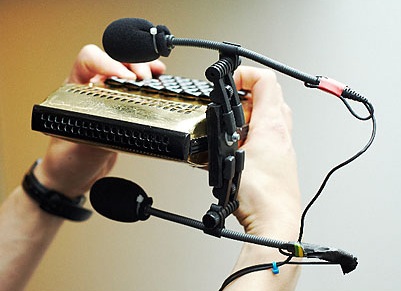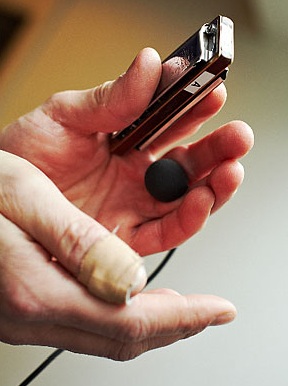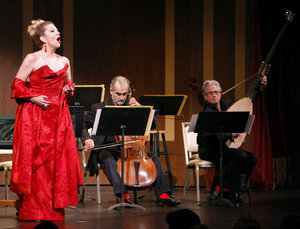Friday, November 30, 2012
Thursday, November 29, 2012
Football in the Fall
These guys have names from the college days like: Cave, Spike, Schwabey,Beeter, Wighty,Kipper,Divits and Blue. Some of us from different years barely know each other's real names to this day...we sure do not use them if we do. Decades later we immediately fall into the same patterns and banter from the first beer to the 4th quarter. This is Lehigh/Lafayette.
You worked hard and played hard. You graduated. We all come back. When the Lehigh v. Lafayette game is on enemy turf, we leave the wives and kids at home. On game day we angle a tailgate spot on the streets near the stadium in Easton. Once again we are laughing and guzziling beers. The grill is lit, the laughing takes over after the news about families and kids and who did not make it today and why...and how much of a pussy they are for failing to do so.
Sneaking booze and beer into the stadium is an art, a science and a tradition.Note the flask in the Sportsman's mit...a nip of fine Bourbon while watching Lehigh football on a chilly November afternoon.
"Greekers" were cheap hot dogs slathered with chili sauce, onions and mustard sold by little lunch-counter joints in South Bethlehem and available at 3 A.M. after you stumbled out of the Fraternity parties and off "The Hill." So named as a nod by the proprieters to the Fraternity trade that was a constant flow of revenue. At the away games I re-create the "Greeker" for the boys at the tailgate. Always a hit, the fare acts as a utilitarian "beer sponge" for the drinks at the tailgate and the ones smuggled into the stadium and the pitchers consumed at the bar back in Bethlehem after the game.
You and the boys cheer and high five the touchdowns. This is a grudge match game...college football's most played rivalry. You cheer louder than a regular game...you really want a win.This year Lehigh once again triumphed. It was a close game in the 1st half...but the Lehigh boys ran away with it after that.
The Lehigh faithful flood the field at the end of the game. In the old days we rushed the goal posts and tore 'em down. That tradition is best left for another post.
Barton Peveril College Visit
Shaun Attwood
Wednesday, November 28, 2012
Postcards from T-Bone (2)
Thoughts become words.
Words become actions.
Actions become habits.
Habits become character.
Character becomes destiny.
Pass that on to whoever wants to listen about change.
I will be in England some day.
Each one, teach one. Strength and Honor. Steel embrace.
Students at the T-Bone Appreciation Society, I love you,
T-Bone
Click here to read Postcard 1 from T-Bone: http://jonsjailjournal.blogspot.co.uk/2012/11/postcards-from-t-bone-1.html
Click here to read the the fight story, T-Bone v Scooter: http://jonsjailjournal.blogspot.co.uk/2008/06/12-jun-08-t-bone-v-scooter-t-bone.html
Shaun Attwood
Tuesday, November 27, 2012
Amber Foundation Visit
Shaun Attwood
Thai Lady Boys of Bangkok
Shaun Attwood
Monday, November 26, 2012
Sunday, November 25, 2012
Sväng’s Arrangements of Chopin for Harmonica Quartet

W e use a special bass harmonica microphone manufactured by Suzuki. This mic is attached directly to the body of bass harmonica, so it gets really close to the source of the sound. The mic module is as long the instrument, and there are several electric condenser mic capsules in it. The capsules are engineered to have different frequency responses depending on their location in the bass harmonica, according to register. The mic has an built-in preamp operating on battery power. Because the capsules are omni-directional condenser mics, the mic module is very prone to feedback on-stage. It feeds back really easily in the monitors and sometimes also on the main PA. To solve this problem, we use in-ear earbud monitoring and very careful equalization on the bass harp.”
— Sväng.
F or diatonic and chromatic harmonicas, we use handheld Audio Technica ATM350s. The mic is held between player’s left-hand fingers, but there are seldom problems with any handling-related noises. Microvox has its own belt clip preamp with volume control knob.”
— Sväng.
O nly recently I came across Sväng’s 2010 recording of their arrangements of Chopin piano etudes, mazurkas, and polonaises. Sväng—the award-winning harmonica quartet from Finland—was commissioned by the La Folle Journée de Nantes festival to create these arrangements. Eero Grundström and Jouko Kyhälä, two of the group’s members, responded to this challenge with dazzling facility, adapting and orchestrating Chopin in such a way that the ethnic texture and musical intent of the originals are honored and preserved and yet new and interesting possibilities are revealed.
I n much the same manner as Chopin wrote the bulk of his compositions while living on ‘foreign’ soil, so too this work by Sväng feels deeply ‘transnational’.
T he arrangements have the motorics of festival dancing and outlawry, and all the confessional intimacy of close friends. The tuba-like bass lines alternately convey polka-like or gypsy-like feel. We have klezmer/ladino clarinet figures in here, rendered by harmonica with awe-inspiring technique. Story-telling, pneumatic phrasing of free-reeds clasped to emphatic lips, the music hovers between conserving traditional values and surrendering to pressures for assimilation into an alien culture.
T here are sad songs of separation, improvised deployments of non-standard instrumentation in service of musical ideas that hail from another culture. The collection co-opts Chopin, infusing it with Baltic jazz sensibilities.
T he informality of the recordings makes you want to get up and dance and join in song. The arrangements of the mazurkas are all bright and uplifting.
[50-sec clip, Chopin - Mazurka Op. 68/2 arr. Eero Grundström ; (track 1), 2010, 2.4MB MP3]
M ore than anything, the effect is a ‘caravan’ soundscape—like a great kumpania—a nomadic band of families, traveling with horses and sleeping in the rough. The sonic ‘wagons’ in this caravan are elaborately carved and fantastically painted; the outlook of Sväng is heterogeneous, with a strong sense of the whimsical and the absurd.
T he music evokes nostalgia, but nostalgia for what? A return home? No. This is a musical pattern of chronic displacement; of families who have winter digs but are of uncertain origins; of clans who have no permanent place and few possessions. Or maybe you feel a resemblance to the saudades and fatalism of portuguese fado. Or you listen, as you might listen to a ribald uncle telling aphorisms. The fascination in which he holds you derives from his concision, which stuns... and also from his wit, which throws you down. The Disenfranchised and Appropriated become the Appropriators!
T he engineering and production values achieved at Studio Kyhättö do great credit to the arranging and performing on this disc. The sound has great warmth and intimacy, with just enough reverb/chorusing for liveliness. (For harp players who wish to learn about the miking equipment and techniques that Sväng utilizes to such advantage, have a look at their website.)


- Sväng miking setup
- Sväng plays Chopin! CD (Jumi-tuotanto Oy, 2010.)
- Sväng Schladtzshe! CD (Aito Ltd, 2011.)
- La Folle Journée website
- Suzuki bass harp w/ integral mic
- Sennheiser e608 supercardioid mic
- Audio Technica ATM350 mic
- Sibelius Academy
- Sväng YouTube channel
- Gartland T. The Talking Harmonica: Harmonica as a Second Language. CreateSpace, 2009.
- Duncan P. Complete Chromatic Harmonica Method. Mel Bay, 2005.
- Society for the Preservation and Advancement of the Harmonica (SPAH.org)
- HarmonicaMasterClass.com
- Fonseca I. Bury Me Standing: The Gypsies and Their Journey. Vintage, 1996.
Schools Tour Blog and Pics
 |
| Winchmore School, London |
 |
| With Amy and Pat at Macclesfield College |
 |
| With Jade and Ian at Macclesfield College |
 |
| With Laura and Akif at Macclesfield College |
 |
| William Beaumont School, Warrington |
 |
| With Tia a brilliant reader at Winchmore School |
Shaun Attwood
Wednesday, November 21, 2012
Thanksgiving Salutations
Here is wishing fellow bloggers a fine day and a fine feast. Enjoy your family and friends. Buck season opens here in PA on Monday so be safe. I have to be in court Monday so I will defer deer hunting until later in the week. If the weather is not 60 and sunny on Friday I will be in the duck blind. If it is a "blue-bird" day I will shoot some clays and train the dog rather than just taking the decoys for a ride. In the meantime, dinner for 12 tomorrow and a 17 lb free range to brine and roast. Cheers!
Tuesday, November 20, 2012
Monday, November 19, 2012
Question Time
Saturday, November 17, 2012
DiDonato, Sinkovsky, Il Complesso Barocco Bring Down the House

W e singers tend to boast that our careers offer the best form of psychotherapy in existence, for we are allowed to work out the bulk of our inner demons courtesy of the larger-than-life drama queens we encounter on the stage—divine ladies who weep, love, moan, and avenge more grandly and stylishly than in any other art form.”
— Joyce DiDonato, 2012.
T he Joyce DiDonato/Dmitry Sinkovsky/Il Complesso Barocco performance last night in the Harriman-Jewell Series was really phenomenal. Many extraordinary, seldom-heard works by lesser-known Baroque composers, like Antonio Cesti (1623-1669), Geminiano Giacomelli (1692-1740), Giuseppe Orlandini (1676-1760), and Giovanni Porta (1675-1755). Extraordinarily dramatic and vivid vocal and instrumental interpretations. Extraordinarily tight and responsive interactions between the ensemble members and Ms. DiDonato throughout.
A scending cadences, each with the forte dynamic they require, imparting a strong sense of closure. Descending cadences to pianissimo, imparting a sense of sorrow with aspiration. The sort of gestures that Hatten once characterized as “yearning” (see links below).
F ormalized emotion—a dialectic of ‘drama queens’—DiDonato rations her body movement, reserves it mostly for recitative passages, while her body is relatively still during arias: her regal rhetoric is well-suited to these stories of queens and princesses. The arias ‘frame’ the dramatic recitatives, not the other way round (that is, ‘decorative’ arias, see Taruskin, p. 25).
M ost online reviews from performances on their current tour do focus, understandably, on Ms. DiDonato’s singing. But, my God, this ensemble! Gorgeous! And, my God, Sinkovsky! Prodigious!
W hat strings is Dmitry Sinkovsky playing!!? Silver-plated, copper on gut? Pirastro Eudoxa? Chorda? Sensuous with a glint, a sound that is a perfect match for DiDonato's rich mezzo-soprano voice!
T he wound G-string was common on violins in the 18th century. Beyond 1840 and already far beyond plain gut strings, composers were writing things that were, essentially, only playable with a wound G string. With modern strings, we’d lose this rich, complex sound of very thick gut strings. We’d lose the consort timbre within the violin family. We’d lose the diversity of articulation, and we’d lose subtleties of this 17th and 18th Century sonic architecture.
T o a software engineer like me, the musical score is an object-oriented ‘method’, procedural code executed on an instance of an object-class that may or may not grant all of the behaviors specified by the arguments passed to it. But Dmitry Sinkovsky and Il Complesso Barocco accomodate all args, all flavors!
T he range of Dmitry Sinkovsky’s articulation is especially interesting, because it allows him to imitate the singer’s diction, with diverse ‘consonants’ beginning each violin-syllable (or bow stroke) and diverse glottal and quasi-labial and -dental and -fricative sounds to match each of DiDonato’s vocal gestures. Through the centuries, the imitation of the human voice has always been an ardently sought goal for instrumentalists. Sinkovsky totally owns this! (He has even mastered American folk-fiddlish, jiggy “hoe-down” technic, which he improvised to humorous effect at DiDonato’s prompting for one of her encores, to the raucous delight of her hometown Kansas City audience!)
S inkovsky’s pulsatile, fluid bow-and-whole-body gestures, dance-like, match DiDonato’s operatic arms-and-whole-body gestures. Sinkovsky’s bow stroke is Transitional Period? Russian? Energized ‘non-legato’, at any rate! Because of the ‘give’ of the bowhair, the bow does not emit full sound immediately at the onset of the stroke, but only after some pressure has been exerted and some bow excursion has occurred—the momentary softness followed by a crescendo in each stroke.
H e plays fast passages with energy abounding but with still a roundness to his sound and supple articulations. A player trained in a modern, pressure-on-the-bowstick style feels immediately that baroque bow does not give the attack of a modern bow—it’s more from the wrist and fingers. But Sinkovsky’s Baroque bow attack is astonishingly sharp—more so maybe than would be achieved with a modern bow. Our jaws were agog for 2 hours in gob-smacked amazement.
A re these tempi faster than normal, or are we just glad to see you all? Was the room hot, or was it just you? :)
N ext up for these artists is Carnegie Hall tomorrow.
- Joyce DiDonato website.
- DiDonato & Il Complesso Barocco. Drama Queens. (Virgin Records, 2012.)
- Dmitry Sinkovsky page at Andreas Janotta Arts Management.
- Il Complesso Barocco website.
- Bachtrack blog. DiDonato Drama Queens review. 14-NOV-2012.
- Burton A. Performer's Guide to Music of the Baroque Period. Oxford Univ, 2001.
- Clement C, Wing B, McClary S. Opera; or, The Undoing of Women. Univ Minnesota, 1999.
- Conrad P. A Song of Love and Death: The Meaning of Opera. Poseidon, 1988.
- Fubini E. Music and Culture in Eighteenth-Century Europe: A Source Book. Univ Chicago, 1994.
- Goldenberg Y. A musical gesture of growing obstinacy. MTO 2006;12(2).
- Hatten R. Musical Meaning. Indiana Univ, 2004. p. 100.
- Hatten R. Interpreting Musical Gestures. Indiana Univ, 2004.
- Heurtz J. Joyce DiDonato returns in triumphant Folly concert. Kansas City Star, 17-NOV-2012.
- Kerman J. Opera as Drama. Univ California, 2005.
- Kivy P. Osmin's Rage: Philosophical Reflections on Opera, Drama, and Text. Princeton Univ, 1988.
- McClintock C, ed. The Solo Song, 1580-1730. Norton, 1973.
- Morrison M. Joyce DiDonato Drama Queens review. The Times. 03-NOV-2012.
- Robinson P. Opera, Sex, and Other Matters. Univ Chicago, 2002.
- Rosenberg M. Drama Queens review. WQXR, 11-NOV-2012.
- Rutherford S. The Prima Donna and Opera, 1815-1930. Cambridge Univ, 2006.
- Taruskin R. Music in the Seventeenth and Eighteenth Centuries. Oxford Univ, 2009.
- Baroque violin strings at EarlyMusicShop
- Baroque violin strings at TheStringZone
Friday, November 16, 2012
Random Acts of Spirit
Nevertheless, the tone on campus was and is always ramped up. There are still bonfires and attempts to deface the opposing school statues and sunrise cocktails on the morning of the game. The fraternities rent buses to hit the away games and I have fond (but episodic) memories of washing down stale donuts with 101 proof Wild Turkey at 8:30 A.M in the back of the bus with the boys on the way over to Easton.
Thursday, November 15, 2012
Skills
Connaught School Visit in Aldershot
 |
| With Tilly and James, brilliant readers |
Shaun Attwood
Wednesday, November 14, 2012
Experiencing ‘Map of Rain Hitting Water’ in the aftermath of Hurricane Sandy

W hen at last Justine arrives, he’s at the piano
the hammers strike and rise
with his fingers, and the pedal’s damp
shifting carries through the instrument
as waves echo through the frame of a ship...
Now he thinks perhaps the music’s
More like a map of rain hitting water—
He’s moving closer to her without moving;
And how wonderful to be held from her
at last by nothing but the song's duration—”
— Wayne Miller, ’What Night says to the Empty Boat’, p. 73.
I ’d first listened to Mara Gibson's new 16:30 work commissioned by Mark Lowry of newEar Contemporary Music Ensemble in July. The DVD has Mark performing vibraphone, log drum, woodblock, gong, tam-tam, songbird whistle, cymbal, and miscellaneous percussion, accompanied by video imagery and film by Caitlin Horsmon. Bob Beck rendered a high level of engineering and production values achieved in this recording.
T he beauty of the chromatic intoning of vibraphone, punctuated by tolling woodblock, drum, and, less frequently, other instruments captured my interest from the first listening. The glisses and pitch-bent post-processed sounds of the vibraphone acoustically paralleled the imagery, the lateral motion of water in the foreground and in the distance; the water droplets in air, falling under gravity in parabolic arcs; the globules of water separating from a stream; the intercalating pastel cloud layers.
B ut now several months later—having just last week returned to the midwest after a period at our home on the East Coast, and having driven through some of the areas of hurricane-caused power outages and natural devastation—these textures and narrative arcs of ‘Map of Rain Hitting Water’ evoke different meanings for me. The watery surfaces now seem ominous and obscure what lies beneath.
T he reflections imply sky and sun, but these seem untrustworthy. The eddies and vortices imply structure and hidden currents, turbulence: the violence and indifference of Nature to humanity.
T he speed of the current makes abundantly clear how rapidly we will be swept away, annihilated, pointlessly. The accelerando/ritardando phrasing imparts a large-scale 2+ minute hypermeter to the piece.
N o animals or other sentient creatures are seen anywhere in Horsmon’s imagery here... bulk matter only, liquid and air. The abruptly changing frame-rate... declares a capriciousness of our frame of perception, together with Nature’s propensity to precipitous, emergent change, against which our human wishes and needs are respectively futile and irrelevant.
T here is midway through the film a montage of stop-action stills, with different transparency/saturation settings, calling into question what is motion. It brings to mind horror film sequences built up out of successions of freeze-frame stills.
T he very high-speed video of the water droplets, together with digitally-stretched contrast and/or edge-sharpening, gives heightened perception of the separateness of the individual [droplets].
W e have here a sort of ‘video-monitor-as-painter’s-canvas’ effect... a palimpsest of successive masks and over-writing of previous images and surfaces.
T he film draws our attention to the very thinness and 2-D nature of our existence in the biosphere, between the sky and the depths of water.
I n fact, most of the film is of deep water: the first 5:45 is sky; second 6:00 is water; third 4:45 is water hurled into sky—with gradual transitions between these segments.
T he piece conveys feelings of loneliness and alienation that arise from our understanding that we are alone in the universe and insignificant in its workings. Underneath the performer’s punctuated observations and soliloquy about fate and the stream of events that occupies our attention while we are alive is a certain forboding, a fear of nothingness.
T hat we are in some inescapable way alienated from Nature is an old concept, going back at least to Jean-Jacques Rousseau in the 18th Century. It is also a notion that coheres with our current environmental problems, insofar as our estrangement from Nature involves a hubris that forecloses upon developing an awareness and regard for how we depend upon Nature, in such a way that we would stop harming Nature.
R elinquishing whatever agency I have in the presence of the bulk matter around me reveals my beholdenness to the agency of other humans who are living now and who will take care of me in my dying days and who will outlive me, and the susceptibility of my remains and the residue of my life’s work to the agency of all creatures and natural processes that persist beyond my tiny lifetime.
T he harsh contrast and unblinking lens of the camera—together with the continuous, unflinching sound of the music—announce the abject hopelessness of our achieving any anonymity in the flesh, or participating in any genuine reciprocity with Nature.
S uch existential worries are absent when reciprocal trans-corporeality involves the definitely spiritual, or “more than human”, or involves an ambiguity or reversibility afforded by the hardly-human-at-all, or as-minimally-human-as-possible, as in Wilderness or Zombieness.
O ne can make some sense then of this piece’s assertion that we might be estranged from the flesh without that meaning either that such estrangement puts us really outside the flesh, or that landscapes including sky and water are themselves not fleshy. We are estranged, every bit as much as sky and water are patently fleshy.
T his is a superb composition, an excellent film, a beautiful performance, an excellent recording—sufficient to propel an evening’s meditation and beyond.

- Mara Gibson website
- Caitlin Horsmon website
- Mark Lowry/newEar website
- Wayne Miller website
- Abram D. The Spell of the Sensuous: Perception and Language in a More-Than-Human World. Vintage, 1997.
- Brown C, Toadvine T, eds. Eco-Phenomenology: Back to the Earth Itself. SUNY, 2003.
- Cataldi S, Hamrick W, eds. Merleau-Ponty and Environmental Philosophy: Dwelling on the Landscapes of Thought. SUNY, 2007.
- Cook D. Adorno on Nature. Acumen, 2011.
- Eder K. The Social Construction of Nature. Sage, 1996.
- Honneth A. Reification: A New Look at an Old Idea. Martin Jay, ed. Oxford Univ, 2008.
- Kristeva J. Powers of Horror: An Essay on Abjection. Columbia Univ, 1982.
- Merleau-Ponty M. The Visible and the Invisible, followed by Working Notes, ed. Claude Lefort, tr. Alphonso Lingis. Northwestern Univ, 1968.
- Miller W. Only the Senses Sleep. NewIssues, 2006.
- Toadvine T. Merleau-Ponty's Philosophy of Nature. Northwestern Univ, 2009.
- Vogel S. Against Nature: The Concept of Nature in Critical Theory. SUNY, 1996.































